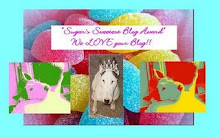 Mom started reading this book the other day and she is already convinced that it is the must have book for everyone. I don't use any beauty products other than shampoo (which I try to get out of using as much as possible), but Mom, being Mom, uses the usual stuff and has been making changes for the past few years to more natural products. The book has added fuel to the fire and now Mom is on a mission to take her beauty regime to the next step.
Mom started reading this book the other day and she is already convinced that it is the must have book for everyone. I don't use any beauty products other than shampoo (which I try to get out of using as much as possible), but Mom, being Mom, uses the usual stuff and has been making changes for the past few years to more natural products. The book has added fuel to the fire and now Mom is on a mission to take her beauty regime to the next step.The Green Beauty Guide is not about makeup, but about all the ingredients that are in the products people use every day - so called beauty products. The real message of the book is that you must read the product labels of everything you put on your body and to educate yourself about the ingredients containted in the products. It's funny how people these days are so concerned about what they put in their bodies, but most never give a second thought to what they put on their bodies. The skin is an amazing organ that absorbs most of what is applied to it, so understanding the what and how of what goes on is important because most of what goes on it ends up in it.
After an introduction about the nature of skin, the author delves into the toxic ingredients contained in most beauty products. The ingredients include 1,4-Dioxane which the author calls the silent killer, phthalates (which Mom calls her asthma killer), aluminum, and propylene glycol to name a few. It looks like you have to be a chemist to fully understand these ingredients, but the author does a great job of breaking them down into laymans terms. There is also an appendix of the 100 toxic cosmetic ingredients you don't want in your beauty products.
The section on how to become an ingredients list expert will probably be most useful to most. The author complied twelve lessons in smart beauty shopping that tells you what to look for and what to avoid. Equally as important is the section on understanding green beauty. Should you always buy organic beauty products? What are non-GMO products? How can I afford all this 'good for me stuff' without going broke? These questions are discussed in a clear and concise manner so that you will know where your money is best spent. The author doesn't tell you which specific products to purchase, however she does make some recommendations and even interviews some green beauty product creators.
The best part of the whole book and where it really pays for itself is in the do-it-yourself section. Why buy beauty products when you can make them at home? The list of green beauty ingredients is extensive but readable. You probably have most of these products in your kitchen already, so why not use them on your skin? There are recipes for cleansers, toners, home facials, moisturizers, sun protection, body care, hair care, baby care, makeup, and fragrances. You can literally whip up some great green beauty in your kitchen that is as good if not better for you than most products you can buy.
Mom has not finished reading this book, but has skimmed through it several times already. There is so much information contained in these 400 pages, that you will need several packs of note sticks and more than one highlighter to get through it all. If you know someone that is interested in green beauty, then this book is for them. Even if you don't know someone who is interested in this topic, but you are, then share your knowledge with them. The old saying "What you don't know won't hurt you" has never been a bigger lie.
Okay, I am going to finish with a few very scarry quotes from the book. I was shocked when Mom read them to me and I know you will be too.
"About 90 percent of cosmetic ingredients have never been analyzed for health impacts."
"Beauty producs are evaluated for safety after they are released to the marketplace."
In sixty-seven years, the FDA has banned or restricted only nine personal care ingredients."









































